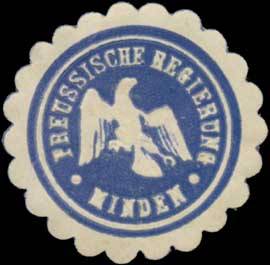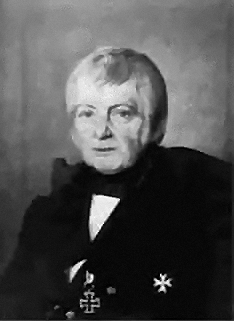|
Regierungsbezirk Minden
The Minden Region (german: Regierungsbezirk Minden) was a government region located in the north-easternmost part of the Prussian Province of Westphalia. It existed from the years 1816 to 1947. It had an area of 5,262 km² and 736,128 inhabitants (1910). One third were Catholics. The capital was Minden and the region was divided into eleven districts. The Minden Region ceased to exist in 1947, when it merged with the Free State of Lippe to form the Detmold Region in the new federal state of North Rhine-Westphalia. References *Adapted from Swedish Wikipedia. Region In geography, regions, otherwise referred to as zones, lands or territories, are areas that are broadly divided by physical characteristics ( physical geography), human impact characteristics ( human geography), and the interaction of humanity an ... MindenRegion Minden Minden MindenRegion MindenRegion MindenRegion MindenRegion MindenRegion {{Germany-hist-stub ... [...More Info...] [...Related Items...] OR: [Wikipedia] [Google] [Baidu] |
Regierungsbezirk
A ' () means "governmental district" and is a type of administrative division in Germany. Four of sixteen ' ( states of Germany) are split into '. Beneath these are rural and urban districts. Saxony has ' (directorate districts) with more responsibilities shifted from the state parliament. The cities of Bremen, Hamburg and Berlin – the city states – have a different system. ' serve as regional mid-level local government units in four of Germany's sixteen federal states: Baden-Württemberg, Bavaria, Hesse and North Rhine-Westphalia. Each of the nineteen ' features a non-legislative governing body called a ' (governing presidium) or ' (district government) headed by a '' Regierungspräsident'' (governing president), concerned mostly with administrative decisions on a local level for districts within its jurisdiction. Translations ' is a German term variously translated into English as "governmental district", "administrative district" or "province",Shapiro, He ... [...More Info...] [...Related Items...] OR: [Wikipedia] [Google] [Baidu] |
Province Of Westphalia
The Province of Westphalia () was a province of the Kingdom of Prussia and the Free State of Prussia from 1815 to 1946. In turn, Prussia was the largest component state of the German Empire from 1871 to 1918, of the Weimar Republic and from 1918 to 1933, and of Nazi Germany from 1933 until 1945. The province was formed and awarded to Prussia at the Congress of Vienna in 1815, in the aftermath of the Napoleonic Wars. It combined some territories that had previously belonged to Prussia with a range of other territories that had previously been independent principalities. The population included a large population of Catholics, a significant development for Prussia, which had hitherto been almost entirely Protestant. The politics of the province in the early nineteenth century saw local expectations of Prussian reforms, increased self-government, and a constitution largely stymied. The Revolutions of 1848 led to an effervescence of political activity in the province, but the failu ... [...More Info...] [...Related Items...] OR: [Wikipedia] [Google] [Baidu] |
Minden
Minden () is a middle-sized town in the very north-east of North Rhine-Westphalia, Germany, the greatest town between Bielefeld and Hanover. It is the capital of the district (''Kreis'') of Minden-Lübbecke, which is part of the region of Detmold. The town extends along both sides of the River Weser, and is crossed by the Mittelland Canal, which is passing the river on the Minden Aqueduct. In the 1,200 years longing time of written history, Minden had functions as diocesan town from 800 AD to the Peace of Westphalia in 1648, as capital of the Prince-Bishopric of Minden as imperial territory since the 12th century, afterwards as capital of the Prussian territory of Minden-Ravensberg until the end of the Holy Roman Empire in 1806, and as capital of the East-Westphalian region from the Congress of Vienna until 1947. Furthermore Minden has been of great military importance with fortifications from the 15th to the late 19th century, and is yet place of a garrison. Minden is ... [...More Info...] [...Related Items...] OR: [Wikipedia] [Google] [Baidu] |
Districts Of Prussia
Prussian districts (german: Kreise, literally "circles") were administrative units in the former Kingdom of Prussia, part of the German Empire from 1871 to 1918, and its successor state, the Free State of Prussia, similar to a county or a shire. They were established in the course of the Stein-Hardenberg Reforms from 1815 to 1818 at an intermediate level, between the higher provinces and the government districts (''Regierungsbezirke''), and the lower municipal governments (''Gemeinden''). Then part of a modern and highly effective public administration structure, they served as a model for the present-day districts of Germany In the aftermath of World War I, the Prussian districts of Eupen and Malmedy (Belgium) were annexed by Belgium in 1925, thereby causing the presence of a German-speaking minority. Administration After the Napoleonic Wars and the 1815 Congress of Vienna, the Prussian lands were re-arranged into ten provinces, three of them—East Prussia, West Prussia a ... [...More Info...] [...Related Items...] OR: [Wikipedia] [Google] [Baidu] |
Free State Of Lippe
The Free State of Lippe (german: Freistaat Lippe) was a German state formed after the Principality of Lippe was abolished following the German Revolution of 1918. After the end of World War II and Nazi regime, Lippe was restored. This autonomy ended in January 1947, when the Control Commission for Germany – British Element (CCG/BE) incorporated Lippe into the new German state of North Rhine-Westphalia created three months earlier. The British established a number of military bases in North Rhine-Westphalia, of which Detmold (HQ and units of 20th Armoured Brigade) and Lemgo Lemgo (; nds, Lemge, Lemje) is a small university town in the Lippe district of North Rhine-Westphalia, Germany. It is situated between the Teutoburg Forest and the Weser Uplands, 25 km east of Bielefeld and 70 km west of Hannover. T ... (infantry battalion barracks) were located within the former boundaries of the Free State of Lippe. States of the Weimar Republic Former states ... [...More Info...] [...Related Items...] OR: [Wikipedia] [Google] [Baidu] |
Detmold (region)
Detmold () is one of the five of North Rhine-Westphalia, Germany, located in the north-east of the state. It is congruent with region of Ostwestfalen-Lippe (OWL, East Westphalia–Lippe). The Regierungsbezirk was created in 1947 when the former state of Lippe was incorporated into North Rhine-Westphalia by merging the former Regierungsbezirk Minden with the territory of Lippe-Detmold. The Regierungsbezirk Minden dates back to 1815, when the municipality type was created initially. Location The Regierungsbezirk Detmold is located in the north-east of North Rhine-Westphalia and therefore it forms the area where the German low mountains are divided from the North German Plain. As the Regierungsbezirk has an expanse of circa 6,500 km², it is one fifth of the area of North Rhine-Westphalia. North and east of the Regierungsbezirk is the German state of Lower Saxony, south there is the state of Hesse. At the western border is the Regierungsbezirk of Arnsberg and the Regierungs ... [...More Info...] [...Related Items...] OR: [Wikipedia] [Google] [Baidu] |
North Rhine-Westphalia
North Rhine-Westphalia (german: Nordrhein-Westfalen, ; li, Noordrien-Wesfale ; nds, Noordrhien-Westfalen; ksh, Noodrhing-Wäßßfaale), commonly shortened to NRW (), is a state (''Land'') in Western Germany. With more than 18 million inhabitants, it is the most populous state of Germany. Apart from the city-states, it is also the most densely populated state in Germany. Covering an area of , it is the fourth-largest German state by size. North Rhine-Westphalia features 30 of the 81 German municipalities with over 100,000 inhabitants, including Cologne (over 1 million), the state capital Düsseldorf, Dortmund and Essen (all about 600,000 inhabitants) and other cities predominantly located in the Rhine-Ruhr metropolitan area, the largest urban area in Germany and the fourth-largest on the European continent. The location of the Rhine-Ruhr at the heart of the European Blue Banana makes it well connected to other major European cities and metropolitan areas like the R ... [...More Info...] [...Related Items...] OR: [Wikipedia] [Google] [Baidu] |
Westphalia
Westphalia (; german: Westfalen ; nds, Westfalen ) is a region of northwestern Germany and one of the three historic parts of the state of North Rhine-Westphalia. It has an area of and 7.9 million inhabitants. The territory of the region is almost identical with the historic Province of Westphalia, which was a part of the Kingdom of Prussia from 1815 to 1918 and the Free State of Prussia from 1918 to 1946. In 1946, Westphalia merged with North Rhine, another former part of Prussia, to form the newly created state of North Rhine-Westphalia. In 1947, the state with its two historic parts was joined by a third one: Lippe, a former principality and free state. The seventeen districts and nine independent cities of Westphalia and the single district of Lippe are members of the Westphalia-Lippe Regional Association (''Landschaftsverband Westfalen-Lippe''). Previous to the formation of Westphalia as a province of Prussia and later state part of North Rhine-Westphalia, ... [...More Info...] [...Related Items...] OR: [Wikipedia] [Google] [Baidu] |
Former Government Regions Of Germany
A former is an object, such as a template, gauge or cutting die, which is used to form something such as a boat's hull. Typically, a former gives shape to a structure that may have complex curvature. A former may become an integral part of the finished structure, as in an aircraft fuselage, or it may be removable, being using in the construction process and then discarded or re-used. Aircraft formers Formers are used in the construction of aircraft fuselage, of which a typical fuselage has a series from the nose to the empennage, typically perpendicular to the longitudinal axis of the aircraft. The primary purpose of formers is to establish the shape of the fuselage and reduce the column length of stringers to prevent instability. Formers are typically attached to longerons, which support the skin of the aircraft. The "former-and-longeron" technique (also called stations and stringers) was adopted from boat construction, and was typical of light aircraft built until the ... [...More Info...] [...Related Items...] OR: [Wikipedia] [Google] [Baidu] |
Government Regions Of Prussia
A government is the system or group of people governing an organized community, generally a state. In the case of its broad associative definition, government normally consists of legislature, executive, and judiciary. Government is a means by which organizational policies are enforced, as well as a mechanism for determining policy. In many countries, the government has a kind of constitution, a statement of its governing principles and philosophy. While all types of organizations have governance, the term ''government'' is often used more specifically to refer to the approximately 200 independent national governments and subsidiary organizations. The major types of political systems in the modern era are democracies, monarchies, and authoritarian and totalitarian regimes. Historically prevalent forms of government include monarchy, aristocracy, timocracy, oligarchy, democracy, theocracy, and tyranny. These forms are not always mutually exclusive, and mixed ... [...More Info...] [...Related Items...] OR: [Wikipedia] [Google] [Baidu] |
Former States And Territories Of North Rhine-Westphalia
A former is an object, such as a template, gauge or cutting die, which is used to form something such as a boat's hull. Typically, a former gives shape to a structure that may have complex curvature. A former may become an integral part of the finished structure, as in an aircraft fuselage, or it may be removable, being using in the construction process and then discarded or re-used. Aircraft formers Formers are used in the construction of aircraft fuselage, of which a typical fuselage has a series from the nose to the empennage, typically perpendicular to the longitudinal axis of the aircraft. The primary purpose of formers is to establish the shape of the fuselage and reduce the column length of stringers to prevent instability. Formers are typically attached to longerons, which support the skin of the aircraft. The "former-and-longeron" technique (also called stations and stringers) was adopted from boat construction, and was typical of light aircraft built until the adv ... [...More Info...] [...Related Items...] OR: [Wikipedia] [Google] [Baidu] |



.jpg)

.jpg)


